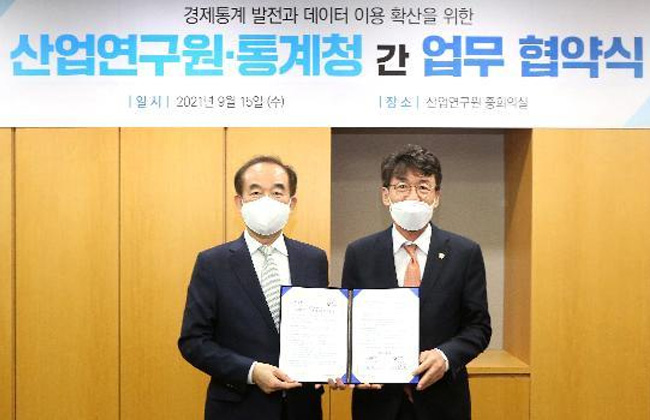Industry Trends
In December 2022, production of all industries in Korea declined for the first time in two months as retail sales rebounded but equipment and construction investments decreased. Production of all industries for the year of 2022 posted the second-highest growth since 2011, and annual indicators of the expenditure-side also saw gains.
| Subject | All industries | Mining & manufacturing |
Service | Retail sales | Equipment investment |
Construction completed |
|---|---|---|---|---|---|---|
| Monthly Change (%) | ∆1.6 | ∆2.9 | ∆0.2 | 1.4 | ∆7.1 | ∆9.5 |
In December, production of mining and manufacturing industries decreased as less cars and electronic parts were produced whereas production of semiconductors rose by 4.9 percent and that of primary metals grew by 3.1 percent. Production of the service industry declined slightly due to the colder-than-average winter weather, the effect of the truckers’ union strike and the sluggish housing market. Retail sales grew as durable goods dropped by 2.7 percent, but semi-durable goods grew by 11.1 percent and non-durable goods rose by 0.1 percent. Despite the declining consumption of durable goods caused by interest rate increases and supply chain disruptions, non-durable goods rose dramatically supported by the effect of cold weather and others. Equipment investment saw a decrease due to the decline of investments in all areas of machinery including semiconductor equipment, cars, and transportation equipment. Construction investments dropped due to cold weather, sluggish housing market, and worsened performance of construction and civil engineering projects affected by the completion of a number of semiconductor plants in November. The cycle variation value of the coincident composite index fell by 0.9 percentage points due to deteriorating production indicators, and the cycle variation value of the leading index decreased by 0.5 percentage points by reflecting weakening economic sentiment.
As exports and the manufacturing sector suffer from the global economic downturn and interest rate hikes, uncertainties in the economy are growing, burdened by the weak recovery of domestic consumption. On the production side, there are positive factors including the effect of China’s reopening and resolution of supply chain disruptions. However, accumulating inventories, the downturn of the semiconductor industry, and the continued downward trend of exports may pose a burden. With regard to consumption and investment, positive factors include the growth of foreign tourists and favorable employment conditions that have fared unexpectedly well after 2022. However, there are concerns that the downturn of the housing market, continued high prices and uncertainties in the monetary policies of major countries may pose a risk.
※ Source: Ministry of Economy and Finance (moef.go.kr)
Trends by Industry
- Automobile
-
'Exports of finished cars hit record-high and posted a double-digit increase for six straight months'

→ In November 2022, production achieved a double-digit year-on-year growth rate for five straight months backed by the easing of shortages in parts supply. Increased production and sales of finished cars pushed production up by 25.0 percent, while shipments and inventories also posted double-digit growth rates. Domestic demand in December rose by 4.7 percent from a year ago with the support of the release of new cars and increased supply. Exports also grew by 16.8 percent year-on-year in December to record a double-digit growth rate for six months in a row. EV exports surged by 46.5 percent, and exports of finished cars also hit record-high to rise by 28.3 percent.
- Shipbuilding
-
'Production index continued recovery and exports and imports both up'

→ In November 2022, cumulative global ship orders dropped by 20 percent year-on-year, but Korea’s ship orders decreased by 4 percent year-on-year with the continuation of multiple contracts with Qatar for delivering LNG carriers and container ships. In November, imports rose by 47.9 percent as imports of ships decreased but those of ship engines and parts and marine structures increased. Exports in December skyrocketed by 76.1 percent year-on-year with the delivery of ships ordered after the fourth quarter of 2020.
- General machinery
-
'Upward trend of production continued, and exports declined further due to plunging exports to China'

→ Production in November 2022 increased by 8.9 percent year-on-year despite declining exports. The growth in production continued for four months since August, supported by sound performance in domestic shipments, facilities investment and machinery orders. In comparison, imports in November saw a decrease of 1.6 percent from a year ago to stand at USD 2.651 billion while exports in November dropped by 3.4 percent year-on-year due to slow exports to China. However, exports to the United States and Europe maintained steady performance supported by the demand for machinery in newly-established local plants.
- Steel
-
'Production and exports both down due to disruptions in domestic production and weak global steel prices'

→ In November 2022, steel production dropped by 23.9 percent year-on-year due to sluggish demand, the aftermath of typhoons and supply chain disruptions, but the decrease was reduced from the previous month. Imports in November fell by 13.1 percent from a year ago mostly due to declining unit prices. Moreover, exports in December decreased by 20.9 percent year-on-year as nations continue to focus their supply on domestic demand, export unit prices decline, and domestic production suffers a setback.
- Oil refining
-
'December performance hit record-high with high refining margins and growing export volume'

→Production in November 2022 increased by 3.1 percent year-on-year despite sluggish domestic demand as export volume grew. Exports in December rose by 22.7 percent from a year ago to reach USD 4.74 billion. The best results for the month of December was achieved supported by the increased demand for alternative fuel in the winter season mainly in the EU and the widened global demand for aviation fuel and diesel. Moreover, refining margins sustained a solid flow by recording a month-on-month growth.
- Wireless communication devices
-
'Global economic downturn in 2022 caused exports to continue declining'

→ Production in November 2022 grew by 4.5 percent year-on-year while shipments fell by 21.0 percent and inventories also grew by 17.6 percent. In comparison, capacity utilization rate saw a dramatic increase of 62.3 percent. the number of telecommunication subscribers dropped slightly by 2.9 percent year-on-year and by 0.1 percent month-on-month. Imports in November nosedived by 37.9 percent year-on-year mostly in mobile phones, parts, and relay systems. Exports also fell dramatically by 33.1 percent year-on-year due to plunging exports to China, the EU and the US.
- Semiconductor
-
'Downward trend of semiconductor exports continued'

→ Semiconductor production and shipments in November 2022 fell by 15.0 percent and 16.3 percent, respectively. Exports in November dropped by 29.1 percent year-on-year to reach USD 9.06 billion, declining for five straight months after ending the long-term rally. Cumulative semiconductor exports stood at USD 129.23 billion in 2022 to hit record-high results.
- Display
-
'Exports continued to decline due to sluggish demand and base effect'

→ Production in November 2022 decreased by 30.4 percent from a year ago caused by the continuation of sluggish demands triggered by delayed production in China. Exports in December also fell slightly due to the effect of sluggish economy in the second half of 2022. In comparison, OLED exports rose by 5.3 percent compared to 2021 as the increased demand in the first half outweighed the effect of the sluggish economy in the second half.
*Please note that the latest data available in Statistics Korea are for the previous month in the case of exports and the month prior to the previous one for production.
Please enter the security text below
to prevent email collection
Please check the information of the person in charge.
연구과제 제안이 접수되었습니다.
신청이 접수되었습니다.


View Summary
코로나19 발생 이후 대부분의 고용 관심사가 항공 및 여행서비스, 음식·숙박 서비스 등 주로 서비스 업종에 집중된 상황에서 본 연구는 최근 그 중요성이 강조되고 있는 제조업의 고용변화를 살펴보았다. 분석에 따르면, 코로나19 이후 제조업 고용은 비교적 큰 충격 없이 빠르게 회복하는 모습을 보이고 있다. 제조업 고용은 서비스업에 비해 큰 충격 없이 유지되고 있고, 코로나19 직후 2020년 상반기에 약간 하락하였지만 하반기부터 회복 추세를 보이고 있으며, OECD 주요국의 제조업과 비교하여도 일본과 함께 고용 충격이 비교적 작게 나타나고 있다. 그러나 전반적으로 양호한 고용 성적에도 불구하고 제조업 내 특성 별로는 차이가 나타나는 것으로 보인다. 종사상 지위 별로 보면, 임시·일용직, 고용원이 있는 자영업자에서 고용 충격이 상대적으로 크게 나타났고, 상용직과 고용원이 없는 자영업자는 큰 충격이 없는 것으로 나타났다. 제조업 규모별로는 300인 이상의 경우 코로나 발생 초기 약간의 충격 이후 고용이 빠르게 반등하면서 코로나 이전보다 고용이 더 증가한 반면, 이보다 작은 규모의 제조업체들의 경우 고용 회복이 더디게 나타나고 있다. 고용의 중장기, 단기 추세선을 비교한 결과 제조업 업종에 따른 차이를 보였다. 코로나 발생 이전 3년간의 추세선을 2020년 1월부터 연장한 선과, 2020년 1월부터의 실제 자료를 이용한 단기 추세선을 비교한 결과, 의약품은 코로나19 발생 이전부터 시작하여 코로나19 발생 이후에도 견조한 증가세를 유지하고 있으며, 전자부품·컴퓨터, 기타운송장비, 가구는 코로나19 이후 오히려 고용 추세가 개선되었다. 그러나 다수 업종은 코로나 발생 이후 고용이 하락하였는데, 특히, 비금속광물, 1차금속, 금속가공 분야나 인쇄·기록매체 업종에서 하락이 상대적으로 크게 나타났다.
The following information is provided.
inform@kiet.re.krPlease complete the CAPTCHA below.
[전지적키에트시점] (Eng sub)심상치 않은
국내 대기업 움직임??
KIET 시점에서 보는 미래 로봇 산업 전망은
어떨까요?
경제전문가가 알려드립니다!
(산업연구원 박상수 실장)


